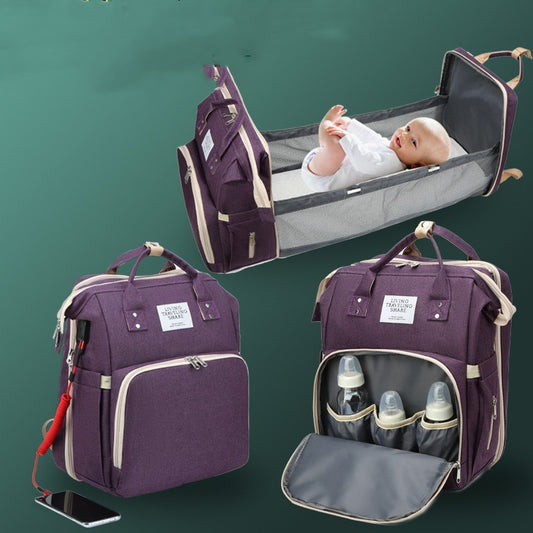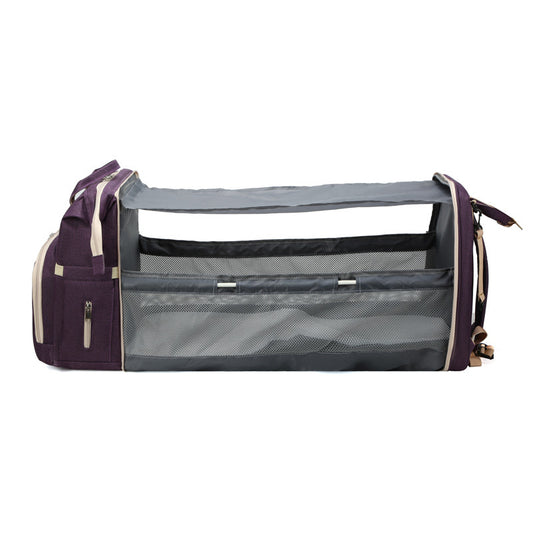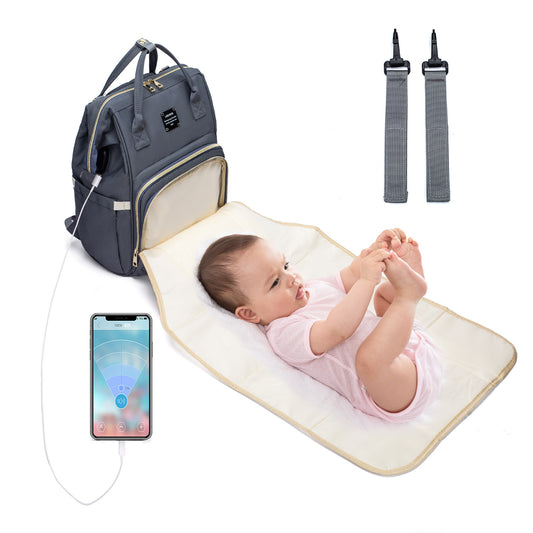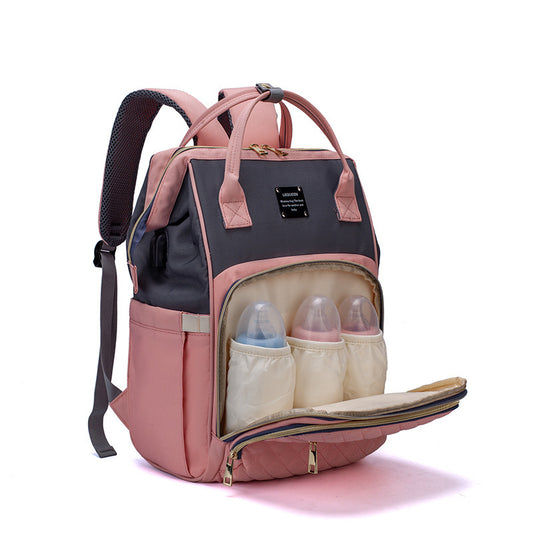A well-organised baby changing bag can drastically reduce stress during daily outings, spontaneous changes, and feeding emergencies. But how much storage is too much, and how little leaves you unprepared?
In this guide, we break down the optimal number of compartments you should look for in a baby changing bag — and why it matters more than you think.
Why Compartments Matter in a Changing Bag
A baby changing bag isn’t just a sack for nappies. It’s your portable command centre. Organisation is everything, especially when your hands are full, your baby needs changing, and you're operating with limited time or space.
Here's what good bag compartments offer:
-
Fast retrieval without emptying the bag
-
Separation between clean and used items
-
Space for both baby and parent essentials
-
Protection for items like bottles or electronics
-
Easier restocking at home
The right structure saves you from clutter, forgotten items, and unnecessary frustration while you’re out and about.
Ideal Number of Compartments for a Baby Changing Bag
Recommended: 8 to 12 compartments or pockets
This is the balance between sufficient organisation and ease of use. Here’s how they typically break down:
1–2 Large Main Compartments
These are used for:
-
Baby clothes
-
Blankets
-
Nappies
-
Wipe pouches
-
Changing mat
Pro tip: A dual-zip top helps when opening with one hand.
2–3 Bottle Holders (ideally insulated)
Thermal compartments for:
-
Formula or expressed milk bottles
-
Water bottles (for both baby and parent)
-
Food containers or puree pouches
Having one for feeding and one for drinks works well.
1–2 Side Pockets
Used for:
-
Tissues or wipes
-
Dummy storage
-
Quick-access items
Often closed with elastic so you don’t need to unzip to reach them.
1 Waterproof or Wet Section
To store:
-
Soiled clothes
-
Used bibs
-
Wet flannels
Essential feature if you're away from home for longer.
1 Secure Internal Zip Pocket (for valuables)
Used for:
-
Car keys
-
Debit cards or small wallet
-
Jewellery
Especially important if you’re not carrying a separate handbag.
1 Hidden or Back Access Pocket
Ideal for:
-
Phone storage
-
Emergency wipes
-
Travel documents or tickets
Some high-end bags include anti-theft panels facing your back.
Optional Extra Compartments You May Find Useful
While 8–12 compartments work for most, some parents prefer bags with more specialised organising features:
-
Dummy case with clip – keeps it clean and easy to reach
-
Nappy sleeve – avoids digging into the main pouch
-
Mini first-aid zip section – for plasters, baby paracetamol, creams
-
Laptop/tablet sleeve – ideal for work-from-anywhere parents
Just ensure more compartments don’t make it harder to find things. Simplicity matters.
How Shoulder Bags, Backpacks & Totes Compare
Backpack Changing Bags:
Usually offer 10–14 compartments, including insulated bottle holders and zip-close dividers. Best for hands-free movement and even weight distribution.
Shoulder Bags (Tote Style):
Usually only include 5–8 compartments but tend to be more stylish. Great for quick trips, but less ideal for full-day travel.
Convertible/Hybrid Bags:
Often include 8–12 compartments and adapt based on who’s carrying it and how it’s being used — backpacks, strollers, or shoulders.
Real Parent Tip:
Test how the compartments are labelled and accessed. In a well-made bag:
-
You can open large sections with one hand
-
You don’t need to remove items to reach the base
-
Essentials can be accessed without unzipping the main compartment
Questions to Ask Before Buying
-
Can I organise items by use (feeding, nappy, spare clothes)?
-
Are the compartments clearly visible, or will I need to rummage?
-
Do I have a protected section for my valuables?
-
Does the bottle section offer thermal protection?
-
Is the design still compact enough to carry comfortably?
Conclusion
Organisation is one of the most important features in a baby changing bag — and compartments are the foundation of that. Aim for a bag that offers at least 8 to 12 compartments, covering the full range of baby care and parent necessities, without being overly bulky.
Whether you prefer a backpack, tote, or convertible design, invest in a bag that supports your routine, not complicates it. The right compartment design ensures faster changes, minimal stress, and fewer surprises when you're away from home.
FAQs
1. How many compartments does a typical baby changing bag have?
Most well-designed baby changing bags include 8 to 12 compartments, a mix of zippered pockets, bottle holders, side pouches, and interior organisation.
2. Is it better to have a bag with more compartments?
Up to a point, yes. Too many can lead to complexity. The ideal is a balanced structure that lets you separate feeding, nappy changes, clothing, and parent items.
3. What’s the minimum I should look for?
At least 6 compartments: one for nappies, wipes, bottles, spare clothes, personal valuables, and a changing mat.
4. Do all compartments need to be zippered?
No. A mix of zipped and elasticated/open pockets offers flexibility. Zipped sections are better for valuables and liquids, while open ones are for quick grabs.
5. Should I choose a changing bag with a wet zone?
Yes, if you plan to be out longer or want to avoid using plastic bags for soiled clothes. Wet sections help keep mess away from clean items.





